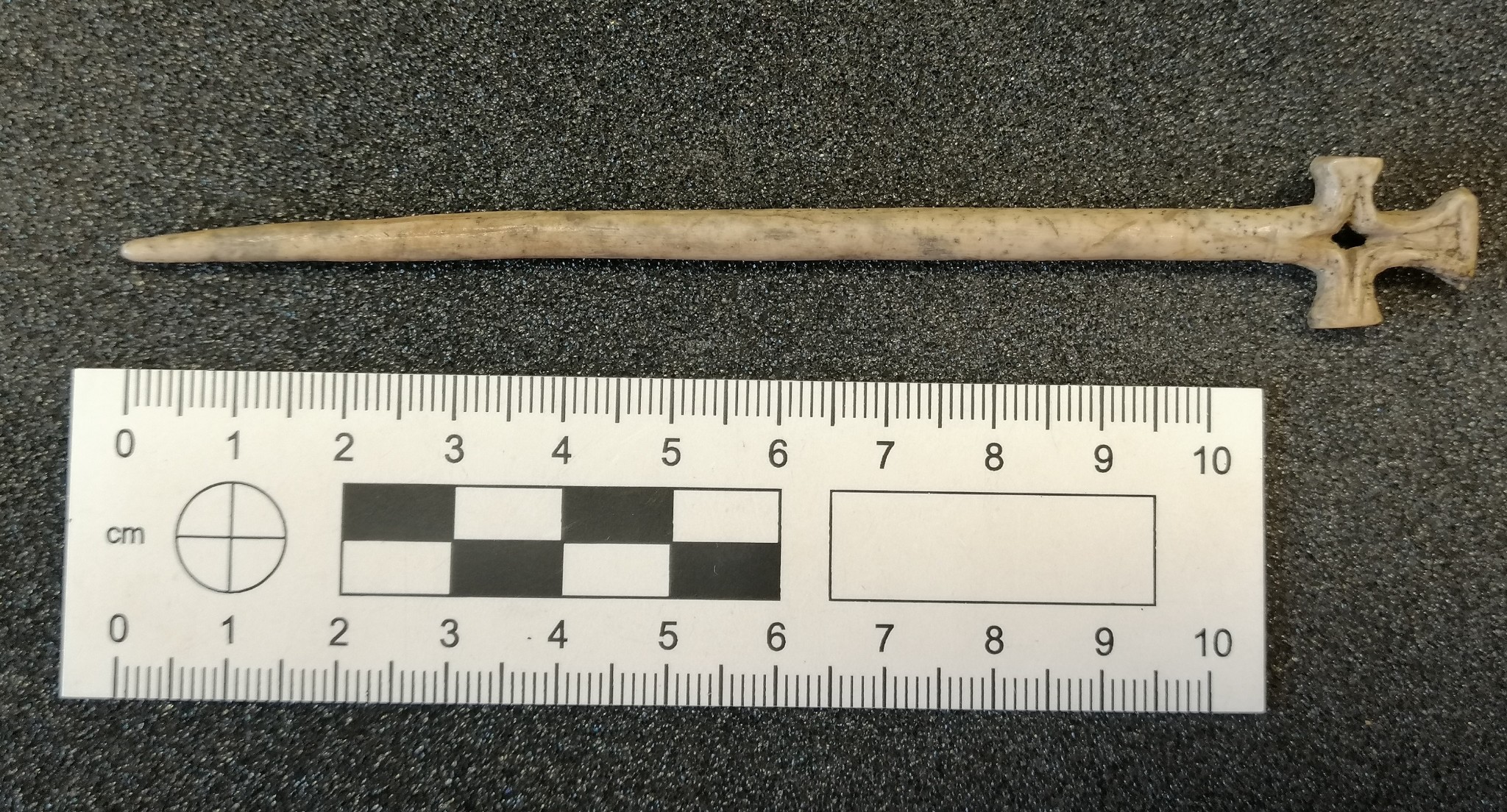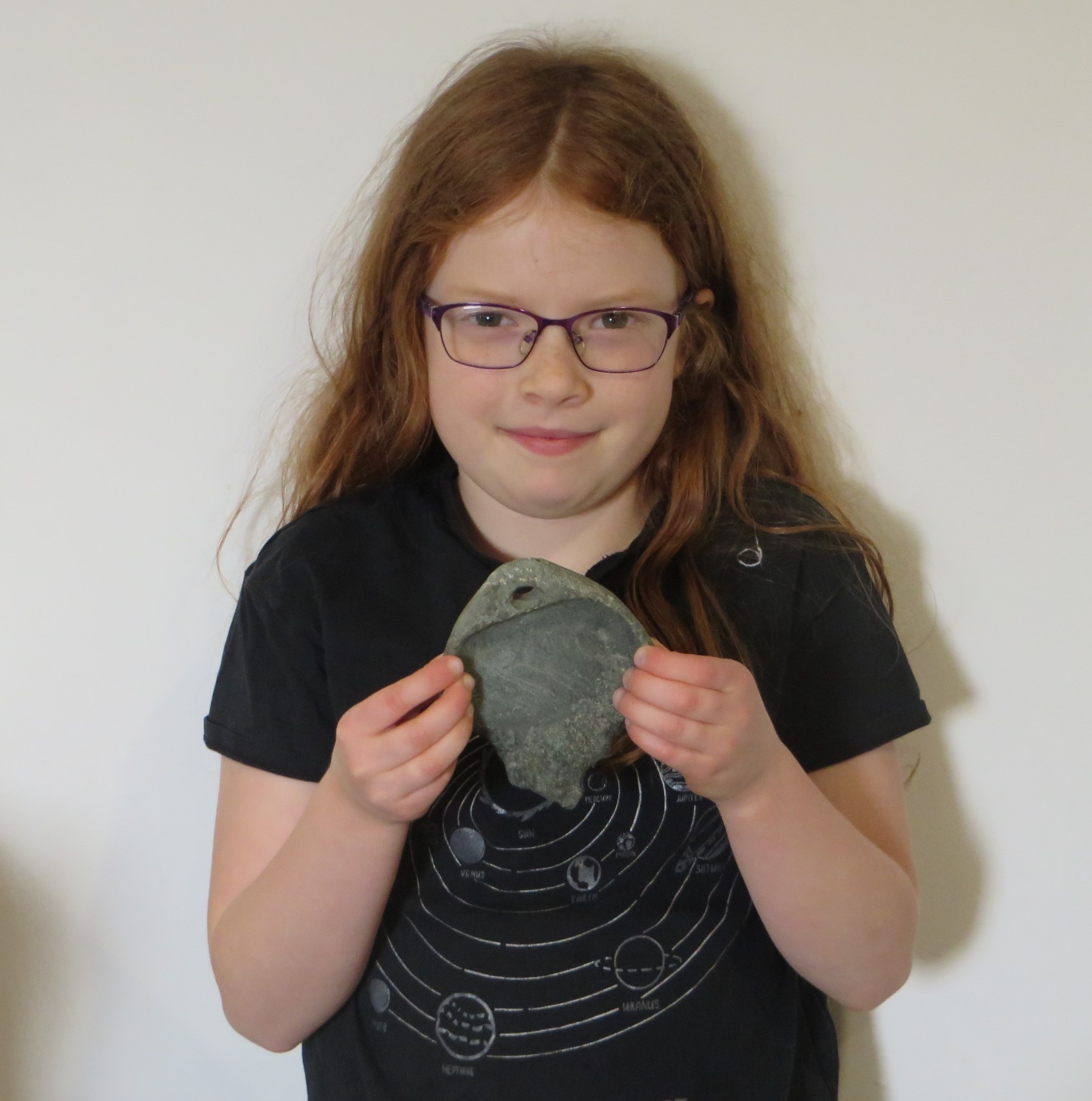Vikings Discovered in Sandwick
Published: 20 April 2021
Hints of two new Viking sites have recently come to light in Sandwick, both made by sharp eyed young people, and both of which will be reported as Treasure Trove.
Pins and Needles
The first was found by Lewis Nodroum who was helping his mum, Beth Cumming, to create a sunken garden. They live beside the bay which the Ordnance Survey map calls the Sands of Sandwick, from which the village presumably takes its name.

In the main the hole which he dug was very sandy, but there was a group of large stones on one side of it. Lewis was helping to move some of these when he found not one, but three, Viking bone pins.
Each pin was different – the most elaborate had a cross carved at one end. One of the others had an eye and might have been a bone needle, rather than a pin. Pins were usually used to keep clothing in place and were intended to be seen.
Although it is very hard to tell from a few stones at the side of a hole, it is certainly possible that these might be the end of a longhouse. It is very curious that three pins had been lost in the same place, and that there were no other Viking finds. The mystery won’t be solved anytime soon since, if the stonework is a house, it is currently underneath by a polycrub.
New Light on the Vikings
Iris Bartlett was the second young person to make a surprising find in the garden in the Swinister area of Sandwick. Her parents were in the garden when they spotted something unusual. When they examined it they recognised it as being an interesting discovery and contacted me. Iris, aged 8, said that she had known that it was there “for ages” but she had thought that it was just “a funny stone”.

The object is a piece of a broken Viking lamp. It is made out of a very fine grained and hard green soapstone. It is possible that the stone came from Unst, where the soapstone is green. Alternatively, it may have been imported from Norway. Iris is incredibly excited that her stone was once used by Vikings. They would have probably filled it with fish oil and used the inner pith of a reed as a wick. Of course, the presence of a lamp might suggest that there was a house which needed lighting somewhere nearby.
The name of the village Sandwick comes from the Old Norse for Sandy Bay. It is therefore not surprising that there should be evidence of Vikings here, although archaeologists have found very limited evidence of that. What is more surprising is that, like buses, hints of two different sites in the village have come to light at the same time.
Dr Val Turner, Regional Archaeologist, April 2021
If you have found any archaeological finds, please do report the either to me or to Jenny Murray at Shetland Museum and Archives.
We would love to hear from you.
We hope you have enjoyed this blog.  We rely on the generous support of our funders and supporters to continue our work on behalf of Shetland. Everything we do is about caring for Shetland's outstanding natural and cultural heritage on behalf of the community and for future generations. Donations are welcomed and are essential to our work.
We rely on the generous support of our funders and supporters to continue our work on behalf of Shetland. Everything we do is about caring for Shetland's outstanding natural and cultural heritage on behalf of the community and for future generations. Donations are welcomed and are essential to our work.

